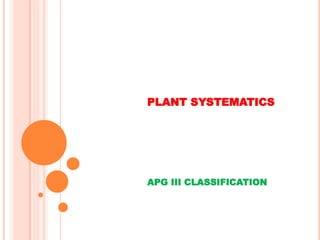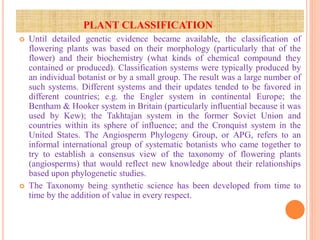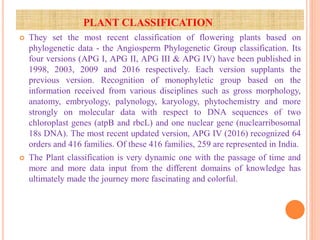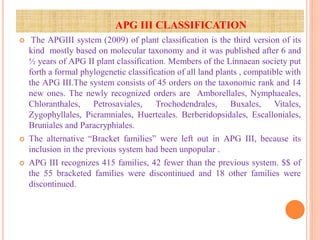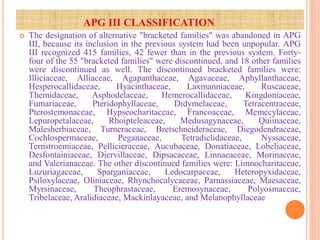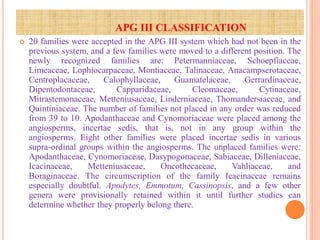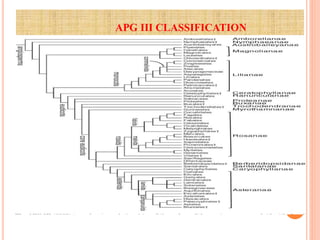The document discusses the evolution of plant classification systems, particularly focusing on the Angiosperm Phylogeny Group (APG) classifications I-IV, which reflect phylogenetic relationships based on molecular data. APG III, published in 2009, introduced significant changes, recognizing 415 families and abandoning the controversial concept of bracketed families. The classification emphasizes monophyletic groups and integrates data from various biological disciplines, although it has limitations concerning the identification of flora and the status of certain families.
